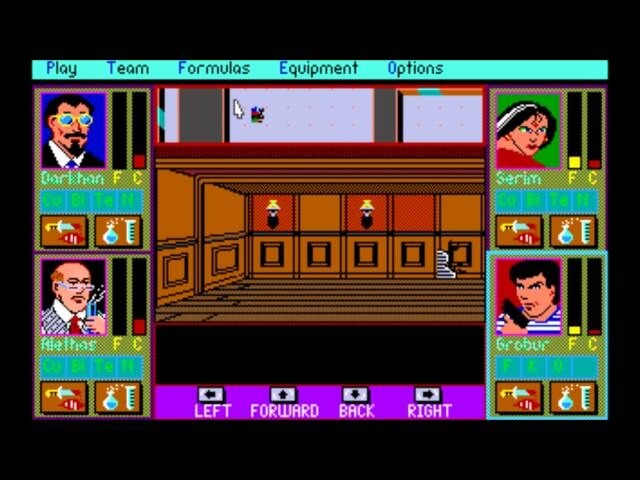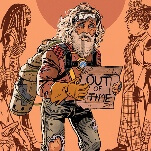The unnameable essence: What makes a game Lovecraftian?

H.P. Lovecraft’s ongoing influence in popular culture is something of a mystery. Even leaving the issue of his politics aside, the type of cosmic horror he is best known for had been well represented before he joined the ranks with his later work (Robert Chambers published The King In Yellow in 1895 when Howard Phillips was just a toddler), and his belabored, description-heavy prose is sure to strain the patience of anyone but the most devout fan. Yet there are still lyrics being written, films produced, and novels conceived that perpetuate the themes we have come to regard as his own—of formless horrors lurking at the edge of sanity and the plight of a humanity plunging into an abyss of meaninglessness and despair.
Perhaps no other field of cultural production is as deeply or diversely affected by Lovecraft’s legacy as video games. A quick search through Steam’s dusty vaults reveals no less than 67 titles that have been tagged as “Lovecraftian,” 12 of which were published in the last eight months alone. This figure does not even take into account the various console and mobile games, obscure indies, and non-Steam PC games that swell the numbers even further. Indeed, so pervasive has his influence become that the label risks losing its meaning, being applied to collectible card games like Cthulhu Realms and quirky JRPGs like Cthulhu Saves The World, whose main claim to being part of the Cthulhu Mythos is the decision to cast its most recognizable character against type. With the term being increasingly diluted, the question is worth considering: What are the essential themes of a truly Lovecraftian game?
Unfathomable entities
I was too fond of ending my stories with sights or sounds which paralysed my heroes’ faculties and left them without courage, words, or associations to tell what they had experienced. —“The Unnamable”
Lovecraft’s creatures, especially the famous mollusk-like deities of his Mythos, were fundamentally different to most other monsters in horror fiction: They were utterly alien in every respect. While Universal was unleashing a horde of terrifying, but ultimately familiar, villains upon film-goers in the most productive period of its monster obsession, here was a writer populating the pages of his stories with the non-euclidean figures of antediluvian, incomprehensible beings—gargantuan, churning chasms of tentacles, eyes, and teeth.
Superficially, the deviation was only an aesthetic one, and the visual aspect has been successfully reproduced even in games that have little to do with Lovecraft’s tone, like Hearthstone’s recent expansion, Whispers Of The Old Gods. The imagery, however—just as much as the barely pronounceable phoneme-chains Lovecraft dreamed up to name his creations—is simply a surface-level manifestation of the deeper sense of ineffable otherness he sought to convey. Whereas traditional anthropomorphic monsters are routinely driven by easily identifiable concerns—hunger, lust, revenge—the motivation behind the actions of Lovecraftian horrors transcends human attempts at understanding it, as does their disposition toward our kind. To the godlike beings of the Cthulhu Mythos, we are neither prey, nor threat. We are bugs: at best inconsequential, at worst a mildly bothersome formality.
No other game captures the sublime horror of encountering such an ancient, alien intelligence, one whose menace does not come with malice but is no less dangerous for it, than Sunless Sea. Failbetter’s opaque masterpiece starts you off innocently enough as long as you don’t stray farther than the coastline around Fallen London and its couple of neighboring islands. But as you move away from the shallows and start to voyage inward, penetrating the unexplored periphery of the Unterzee, its aquatic fauna becomes increasingly strange. There are living icebergs lethargically floating through the frozen northern waterways until some unknown urge compels them to charge your hapless ship; there are metal-clad sharks, their bodies bound and distorted from whatever unexplained experiment they’ve been forced to endure; there is a living vessel referred to as the Tree Of Ages, a mishmash of hewn planks and grown branches, navigated by a crew of spiders.
What makes these creatures Lovecraftian is not that they simply look different to conventional video game enemies, but the sense of individual ancient histories and indecipherable agendas shrewdly woven into their imagery and dialogue snippets. Naturally, what follows an encounter with such beings is nothing less than severe psychological trauma.
Loss of sanity
…Some day the piecing together of dissociated knowledge will open up such terrifying vistas of reality, and of our frightful position therein, that we shall either go mad from the revelation or flee from the deadly light into the peace and safety of a new dark age. —“The Call Of Cthulhu”
Insanity, whether as a starting condition or some final punishment for hubris, has been a feature of story-driven games for quite some time and, when used merely as a plot device, is not necessarily a Lovecraftian trait. For example, take a look at The Terrible Old Man, a freebie point-and-click adventure that adapts the Lovecraft short story of the same name. We find the three villainous main characters drinking at a local New England dive. After overhearing rumors of a retired sea captain and the numerous treasures he has amassed in his isolated mansion, they decide to pay the old gentleman a nocturnal visit. The end of their brief adventure finds each member of the despicable trio either dead or insane, and it’s not entirely clear which conclusion is more merciful.








































